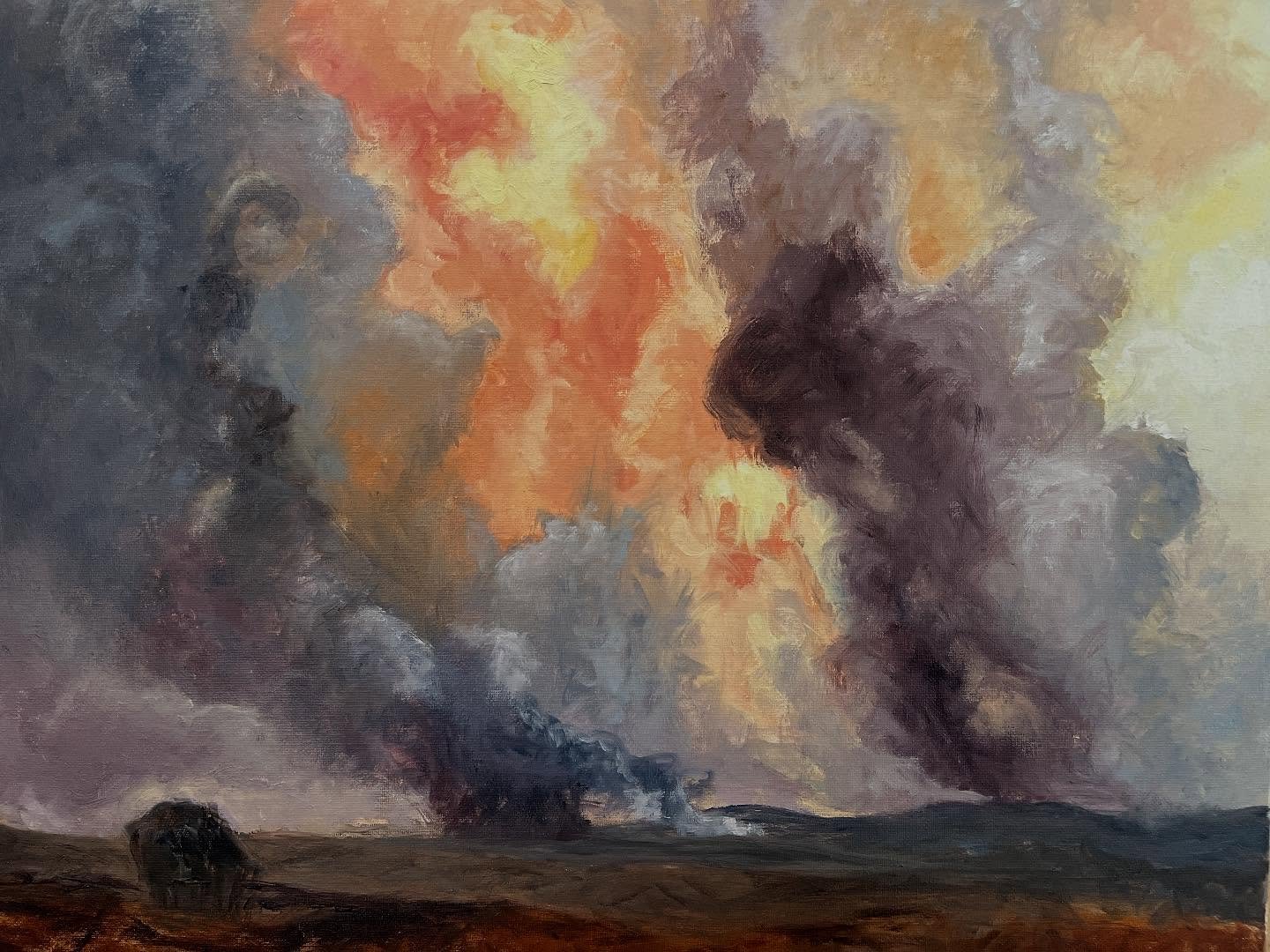-
How to mix tone, colour and fundamental colour theory
About composition and different compositional theories
About different colour palettes and how they affect composition
How to achieve a variety of paint application techniques such as glazing,
working wet in wet, building thicker paint layers (impasto) and more
From a range of different historical and contemporary artists and their approach to painting
About different painting genres and their different applications
-
Art materials are not included in the course fee. Students will need to bring the following items:
Canvas, canvas paper, wooden boards or canvas wrapped over cardboard as a ‘support’ to paint on. Through the term you will need around 3-4 supports. Bring an art journal (a5/4) and one support, minimum 14” x18″ for the first class. These may be cheap canvas from a $2 shop or Office Works.
An A4/5 art journal, 2B pencil, willow charcoal and rubber for sketching out ideas
A selection of 3-4 filbert brushes small, medium and large size. A large glue brush for painting grounds is also useful.
A flat plastic or wooden palette (no wells – these are for watercolour)- An A3 size or bigger rectangular shape is best
Palette knife, diamond shape medium size – metal is best
Rags, bull dog clips, apron, masking tape
Paints: Students may use Oils or acrylics depending on preference.
A good basic colour palette includes:
Cadmium light hue, or primary yellow
Ultramarine Blue and phthalo blue
Cadmium Red Hue (warm) or primary red or Vermillion red and Alizarin Red (cool)
Burnt Umber or Burnt Sienna
Titanium White
Extras – ochre yellow, viridian green.
You can buy student quality paints (Matisse Derivan Acrylics or Langridge/Art Spectrum oils are good, reasonably priced brands). Very cheap paints are a waste of money! At least buy a good quality white.
Cadmium colours are more expensive, and it is perfectly ok to bring ‘hue’ from this range eg Cadmium yellow light (hue) or a warm yellow or warm red instead of the cadmiums.
If using Oil Paints:
You will need odourless solvent for cleanup and mixing mediums. A 250ml bottle is a good size for starters. We recommend ‘Gamsol’ by Gamblin. This is the least toxic solvent on the market and the same price as other odourless solvents. Solvents MUST be odourless. Oil painting solvents and mediums must not be tipped down the sinks. You will need 2 small jars with lids to take away spent solvents/mediums. Spent solvents/mediums must be taken with you and not left in the hall. Your tutor will give you information on reusing and disposing of spent solvents and mediums.
Do not bring turpentine based solvents to class – they are extremely toxic
Mediums – You can mix your own medium with 1/3 refined linseed oil, 1/3 stand oil (heated linseed that drys faster) and 1/3 solvent. You do not need medium for your first few classes. Premixed mediums often have toxic dryers in them unless you buy from the Gamblin range.
If using Acrylic Paints:
Medium – Bring a general purpose flow medium.
Art supply stores
-
Ochre Lawson is a professional artist with over 15 years experience as a painting and drawing tutor. Ochre works with students at their own level and pace and encourages them to discover their own interests and style in a relaxing and supportive atmosphere.
-
Toilets with disabled access, hall also has disabled access
Easels and backing boards
Tables, drop sheets
Some source material
Kitchen facilities with fridge, microwave, coffee/tea, milk, mugs

